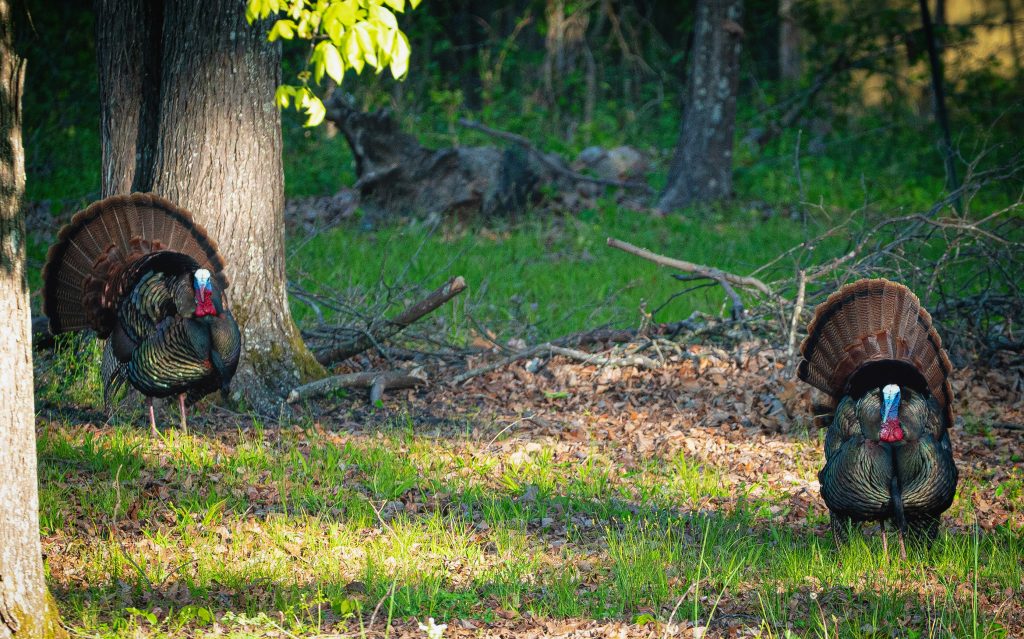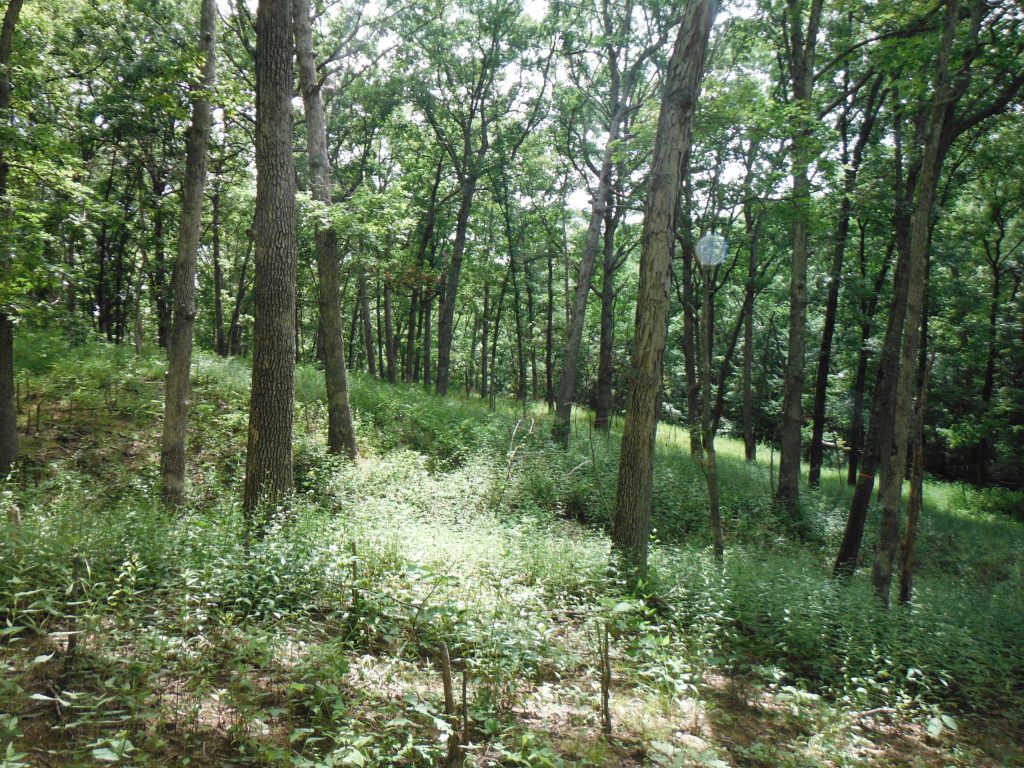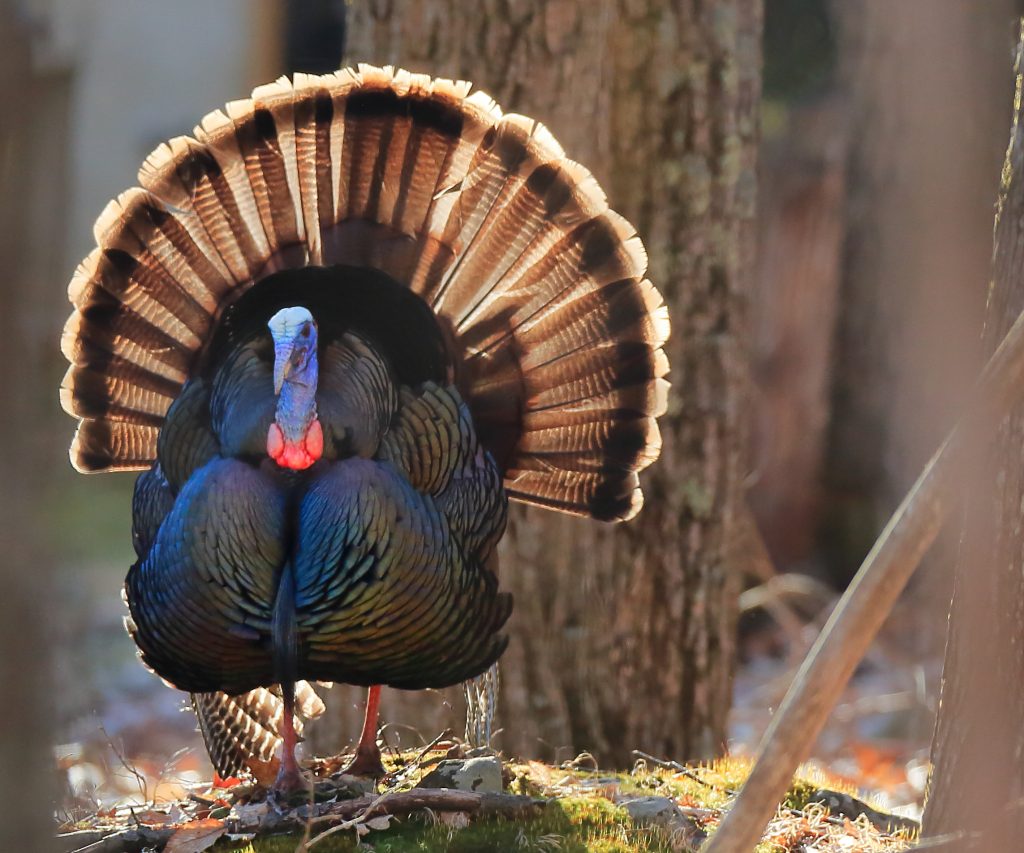Let The Sun Shine In
Partnership aims to open up forest canopies for wildlife habitat in Indiana and Illinois, boosting native oaks.
Historically, oak and hickory dominated the mature forests of Indiana and Illinois. These fire-tolerant, mast-producing trees thrive when fire occasionally burns and thins the understory, helping native vegetation to sprout and flourish. Thousands of species across the insect, amphibian and reptile, mammal and avian world evolved in this rich forested landscape, including birds such as warblers and wild turkeys.
Modern humans have largely suppressed natural fire in recent generations. Commercial forest thinning also has been limited in many regions due to public sentiment and anti-cutting pressure. These factors have led to an overall lack of active management, with the unfortunate consequence of native oak-hickory forests converting into a more homogenous maple-beech ecosystem that is much less valuable to wildlife.
To combat this pervasive and pressing issue, a collaboration of public and private stakeholders, including the NWTF and the American Bird Conservancy, joined forces to create the Let the Sun Shine In Initiative. This partnership includes federal, state and private entities with shared interests in healthy forests and watersheds. Improved wildlife habitat, made possible by restoring and maintaining healthy oak-hickory ecosystems through active forest management, is a priority outcome.

Illinois Showing Success
“The Federation has been involved in the effort in Illinois since prior to 2014, when it received an official name,” NWTF District Biologist John Burk explained. “The southern part of the state is more forest dominated than the rest. It’s also where the Shawnee National Forest is located and much of our collaborative effort takes place. That region holds the dubious honor of probably being the first oak-hickory climax forests in the country to transition to a beech, maple, ash and elm forest, a process called ‘mesophication.’
“Basically, an oak-hickory forest is designed to be fire tolerant,” Burk continued, “and the species that are being allowed to replace it through lack of management are fire intolerant, as well as shade tolerant – they’re not fire friendly. Even the soil chemistry changes, so once the scales tip in that direction, it’s a lot harder to reverse it.”
According to Burk, the average midwestern forest is double stocked, which means there are twice as many trees growing on a site than there are adequate soil nutrients and moisture to support in a healthy condition.
“Eventually they’ll thin themselves out, but in the process the replacement stand that is underneath this canopy of oak and hickory is not oak and hickory anymore,” Burk said. “In many cases, the seeds are there, but beech, maple, ash, and elm can germinate and grow in mostly shade, while oak cannot. Opening the canopy up allows the sun to shine in, and when controlled burns are prescribed, fire-resistant oaks as well as other native plants can flourish.”

Money raised by NWTF members at banquets and other programs support the federation’s Super Fund, which helps pay for a host of forest management techniques, including controlled burns. Much of the NWTF’s work with the Shawnee National Forest takes place via a stewardship agreement.
“We take over administration of a timber sale, and then we use the proceeds to do other types of work like timber stand improvement, open land reclamation, or nonnative invasive species control,” Burk said. “To create an open woodland, you have to cut it, then burn it to keep it open. In some cases, herbicide is also initially used to control invasives such as bush honeysuckle.”
Indiana Beginning to Roll
Across the state line in southern Indiana, LSSI work is just beginning on vast tracts of timber that have languished for decades with an overall lack of active management. While opening the forest canopy is the primary goal, another objective focuses on the public gaining better understanding of why forest thinning and exposing the forest floor and understory to sunlight is so critical for wildlife.
The NWTF and the American Bird Conservancy are tackling this challenge, according to NWTF District Biologist Ryan Boyer.
“We’re really trying to emphasize education and outreach through LSSI in Indiana,” Boyer said, “communicating the importance of different types of disturbance as a management tool so we can help propagate and promote the regeneration of oak and hickory species in our forests.”
Boyer said commercial timber harvest is often the critical first step toward opening up the canopy of the forested stand when trying to regenerate oak and hickory. An open forest canopy promotes plant growth and habitat more useful for wild turkeys. This vital new growth provides nesting and brooding cover and it is plentiful with seeds, berries and insects. Simply, wild turkeys need the plant cover created by opening the forest canopy to meet their breeding season requirements while the oak stands help support their life cycle requirements throughout the remainder of the year by providing critical mast.
“There are groups and organizations focused on creating opposition toward active forest management,” Boyer said. “When biologists and foresters recommend and implement disturbance, though, it is largely based on mimicking natural events like windstorms, ice storms, tornados and periodic wildfires. Native American tribes understood the importance of regenerating desirable species by using fire to set back the succession of others.”
With the NWTF as its partner in Indiana, the American Bird Conservancy developed and received approval for a Landscape-Scale Restoration Grant that supports hiring a coordinator to oversee and bring together the coalition, while modeling the program after Illinois’ success.
“We’re in our infancy compared to Illinois, but we have identified a few areas in southern Indiana that include our larger hubs of state and national forest where managing for oak and hickory is a priority,” Boyer said. “We’re prioritizing opportunities there by working with private landowners adjacent to the public land to showcase examples of the different types of management activities needed to regenerate and maintain a future for our oak and hickory species.”
The Payoffs
The importance of healthy oak-hickory forests is well-documented across a range of species. With plentiful mast crops, large mammals such as black bear and white-tailed deer often reduce their overall home range, have increased fertility rates and produce healthier offspring. Wild turkeys enter winter and spring breeding season in better condition when well-fed on a rich diet of mast. Even pollinators benefit. Boyer said the research shows that more than 550 species of butterfly rely on oaks to meet lifecycle needs. In the caterpillar-stage, before transforming into winged wonders, those insects are protein-packed snacks for many species, especially birds.
NWTF an ‘Invaluable Partner’ in Conservation

Let the Sun Shine In is a partnership focused on restoring and maintaining critical oakhickory ecosystems. Historically, this ecosystem had an open canopy with a structurally diverse understory. Kyle Brazil of the American Bird Conservancy notes that many bird species that depend on open-woodland habitat, such as red-headed woodpecker, Eastern whip-poor-will, and yellow-billed cuckoo, are experiencing long-term population declines.
“NWTF is an invaluable partner for LSSI,” Brazil said. “While Save the Habitat. Save the Hunt. may have been written with wild turkeys and turkey hunters in mind, much of the work that benefits turkeys also benefits declining nongame bird species. NWTF brings to the table an army of dedicated members and biologists who can help make landscape-level habitat restoration a reality.”
